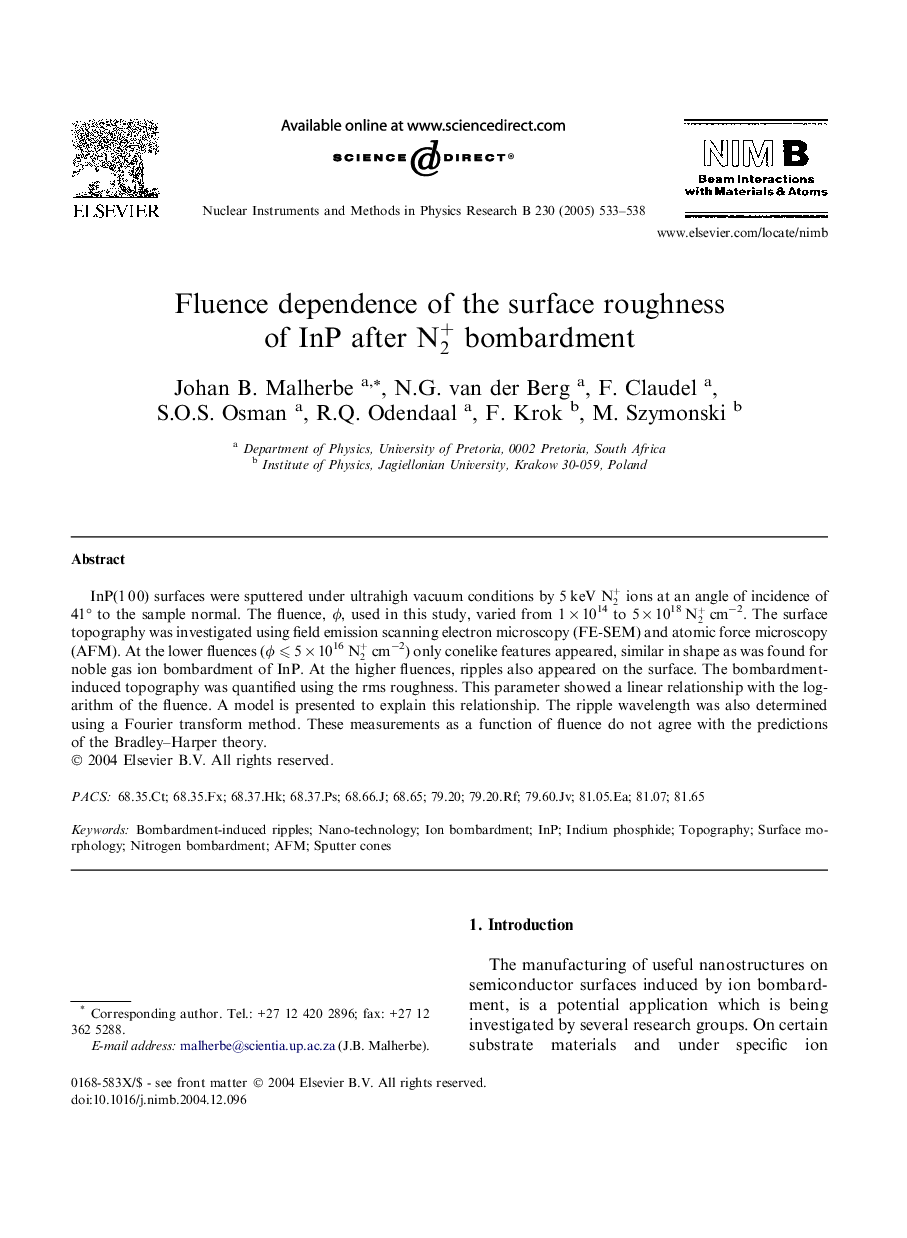| Article ID | Journal | Published Year | Pages | File Type |
|---|---|---|---|---|
| 9818335 | Nuclear Instruments and Methods in Physics Research Section B: Beam Interactions with Materials and Atoms | 2005 | 6 Pages |
Abstract
InP(1 0 0) surfaces were sputtered under ultrahigh vacuum conditions by 5 keV N2+ ions at an angle of incidence of 41° to the sample normal. The fluence, Ï, used in this study, varied from 1 Ã 1014 to 5 Ã 1018 N2+ cmâ2. The surface topography was investigated using field emission scanning electron microscopy (FE-SEM) and atomic force microscopy (AFM). At the lower fluences (Ï ⩽ 5 Ã 1016 N2+ cmâ2) only conelike features appeared, similar in shape as was found for noble gas ion bombardment of InP. At the higher fluences, ripples also appeared on the surface. The bombardment-induced topography was quantified using the rms roughness. This parameter showed a linear relationship with the logarithm of the fluence. A model is presented to explain this relationship. The ripple wavelength was also determined using a Fourier transform method. These measurements as a function of fluence do not agree with the predictions of the Bradley-Harper theory.
Keywords
Related Topics
Physical Sciences and Engineering
Materials Science
Surfaces, Coatings and Films
Authors
Johan B. Malherbe, N.G. van der Berg, F. Claudel, S.O.S. Osman, R.Q. Odendaal, F. Krok, M. Szymonski,
